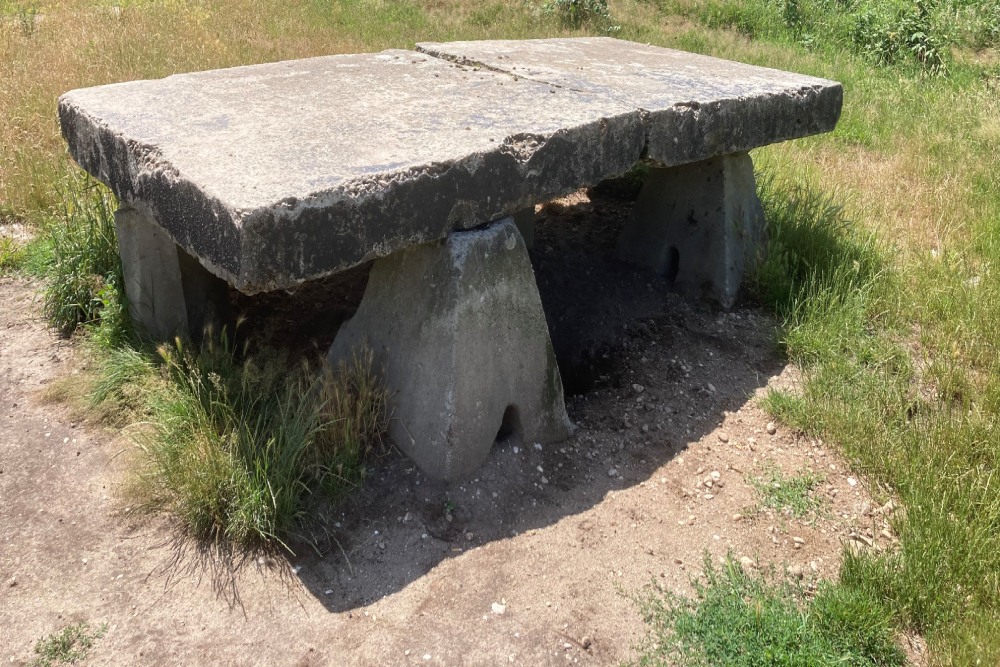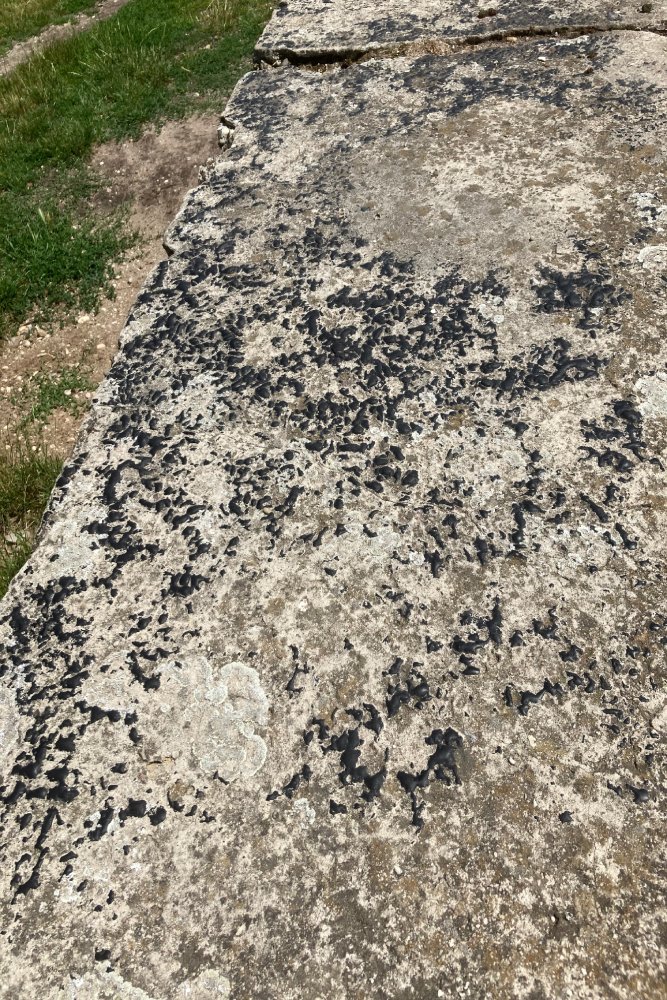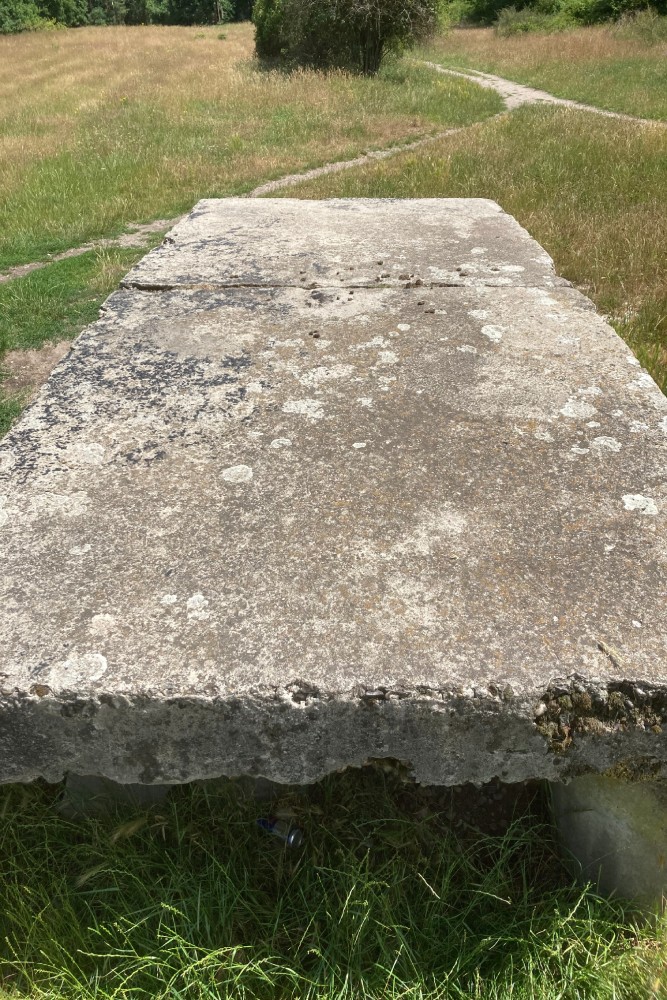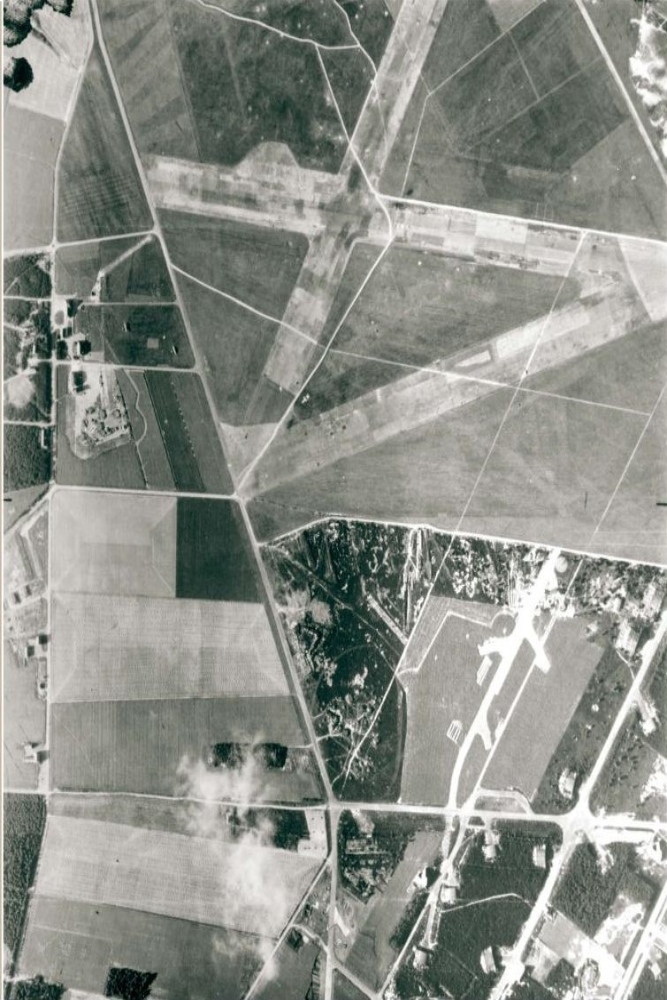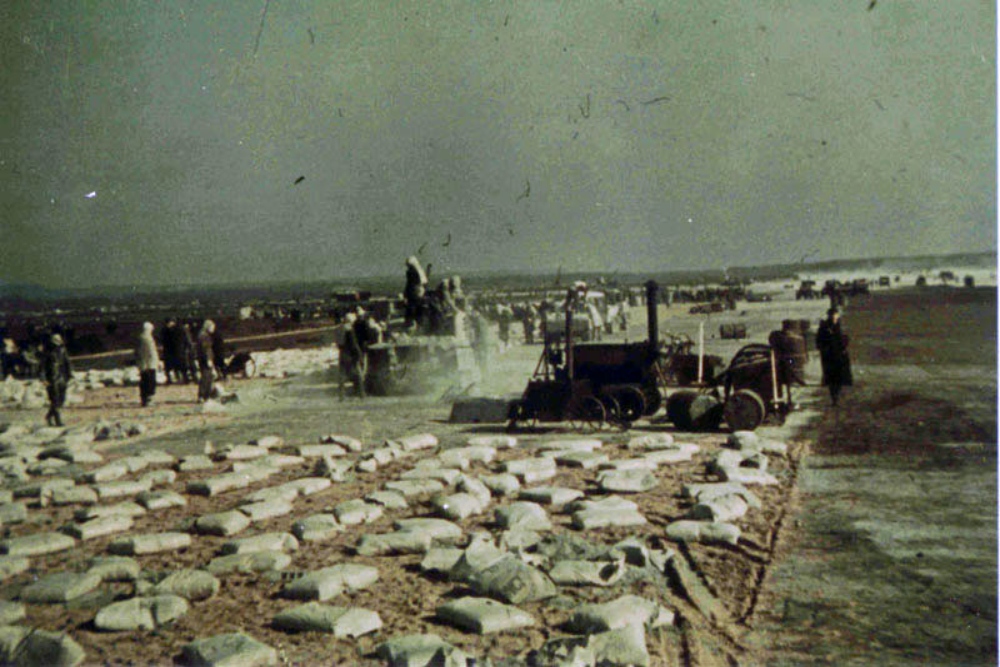Remains of Runway Fliegerhorst Venlo
During the construction of the runways, the Bauleitung and contractors used concrete from the Limburgs Fa. ENCI from Maastricht (photo of construction process).
The runways were constructed in segments. The complete tracks were smeared with a layer of tar (see detail photo) and then painted in different shades of green for camouflage. The latter so that from the air it looked as if there were several plots of farmland.
The camouflage even went so far that existing sand paths were 'permeated' over the runways by means of a lighter color of paint (see aerial photo).
Halfway through, the municipality of Venlo started a major clean-up campaign to clear up the amount of unexploded explosives. Unfortunately, the runways were lost and the concrete slabs were almost all ground up. This does not alter the fact that the contours of the runways can still be seen today.
Today, two cover plates are all that remains of the total 4100 meter runway that Fliegerhorst Venlo had.
Like a kind of modern hunebed, these plates remind us of the war years. These remnants are also called the concrete picnic or ping-pong table by many people.
Do you have more information about this location? Inform us!
Source
- Text: Axel Repping
- Photos: Axel Repping (1, 2, 3), NIMH (4), Gemeentearchief Venlo (5)
Nearby
Museum
Point of interest
- Original Paving Fliegerhorst Venlo - Venlo
- Hangar Remains Fliegerhorst Venlo - Venlo
- Remains of the Rundbogenhalle/Bow Hangar Fliegerhorst Venlo - Nettetal
Monument
- Liberation Route Marker 204: Venlo Hilton - Venlo
- Memorial Fliegerhorst Venlo - Venlo
- Memorial Victims Venlo Airfield - Venlo
Cemetery
- Jewish Cemetery Venlo - Venlo
- Jewish War Graves Venlo - Venlo
- Grave Memorial Belgian Soldiers Venlo - Venlo
Remembrance Stone
- Stumblin Stones Stalbergweg 117 - Venlo
- Stumblin Stones Panhuisstraat 15 - Venlo
- Stumbling Stone Arsenaalplein 2 - Venlo
Fortification
- Flak Fliegerhorst Venlo - Venlo
- Telephone Exchange Bunker Fliegerhorst Venlo - Venlo
- Air-raid Shelter Kleine Heide - Venlo
